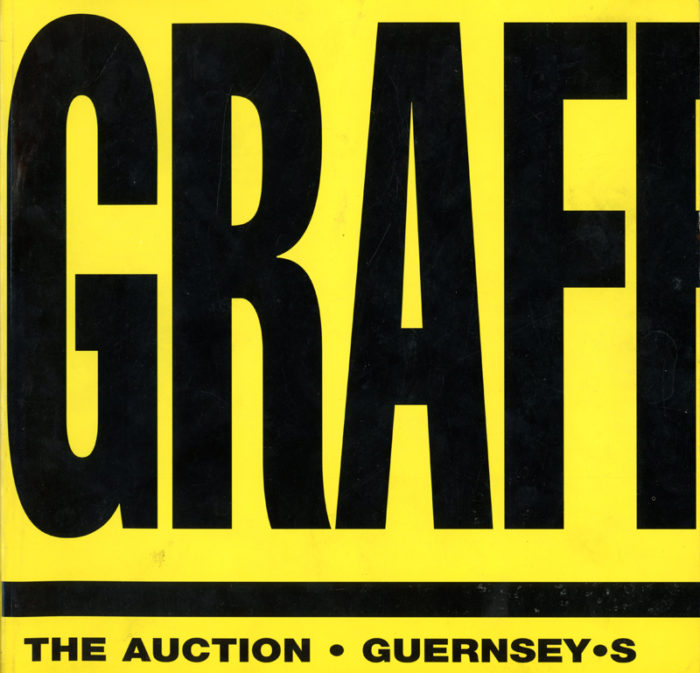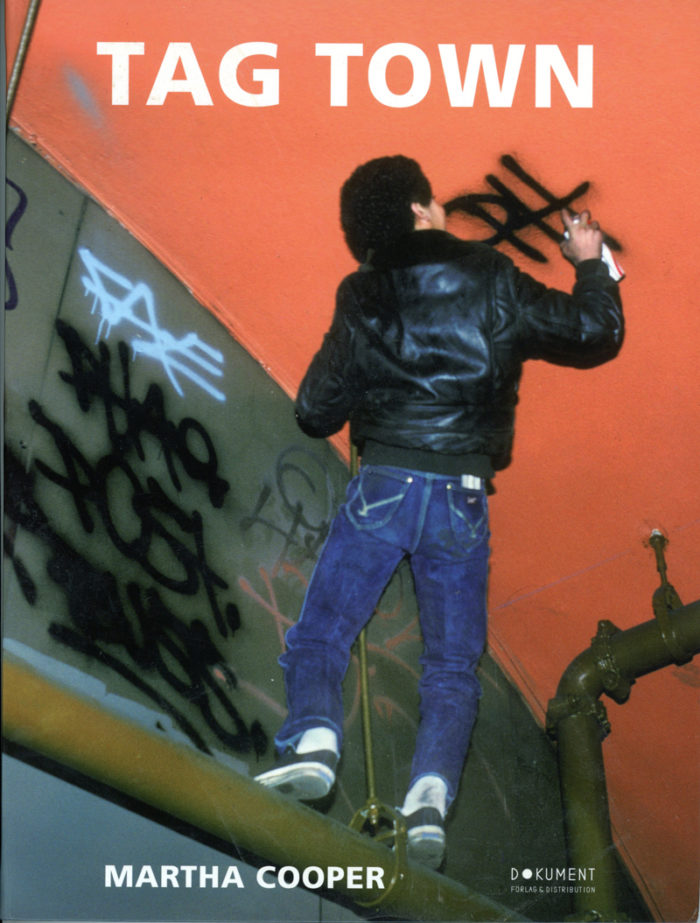
It is not surprising that a transient art form like graffiti has inspired so many books. Whether this new kind of art was created on the streets or in the subways, most of the key early examples that brought attention to the phenomenon in the 1970s and 80s have been destroyed. Books have filled the void by drawing on a rich record preserved by photographers, oral historians, and the memories of the artists themselves.
The profusion of books continued even as graffiti transitioned into the more permanent form of post-graffiti. Undoubtedly the emergence of a legitimate art movement from an outsider youth culture is an extraordinary story that continues to attract collectors and anyone interested in contemporary culture.
Gallery 98 recently acquired more than a dozen classic books about graffiti from a major collection of ephemera connected to the artist Blade. These books join others from our shelves that have not previously been posted. We spotlight four of these books here.
Coming From The Subway; New York Graffiti Art, Groninger Museum, 1992
The Netherlands has good reason to be proud of its connection with graffiti. Outside of New York it was the first place to fully embrace the new art form. In 1983 Yaki Kornblit organized a series of sold-out gallery exhibitions in Amsterdam, and there was also a graffiti exhibition at the Boymans-van Beuningen Museum in Rotterdam. A decade later in 1992, the Groninger Museum organized this ambitious exhibition and catalogue centered around eighteen artists who were amongst the first to move their art from the street to galleries. All these artists continue to command attention today.
Graffiti Art : The Auction, Guernsey’s, 2000
Guernsey’s, Graffiti Art, Auction Catalog, Published by Guernsey’s, 144 pages, 2000
Guernsey’s two-night auction of graffiti-based art was the first time this new art form was tested at auction. The rare catalogue is noteworthy for the range of artists included, and the inclusion of price estimates. While the quality of the art was high, the auction itself was an embarrassing failure. Alan W. Moore captured the depressing outcome in an Artnet article: “Numerous Keith Haring subway chalk drawings did not sell …Two drawings by Jean-Michel Basquiat sold very low, below estimate … Work by the Bronx group Tats Cru passed, Kenny Scharf’s large early ’80s canvases passed, Kaws’ altered billboards passed, and only one work by Lady Pink sold.”
Martha Cooper, Tag Town, 2008
Martha Cooper, Tag Town, 118 pages, Signed by BLADE, Published by Dokument Forlag, Sweden, 2008
Martha Cooper has been (and is still today) the most important recorder of graffiti and street art. Her photographs cover every aspect of the graffiti phenomenon, and have appeared in dozens of books. This book published in Sweden focuses on the earliest form of graffiti, the tag. Many of the photographs date from the early 1980s when Cooper lived in Washington Heights, the neighborhood of early writers like Taki 183, Stitch 1, and of the so-called Writers Corner at 188th Street Audubon Avenue.
Martha Cooper and Joseph Sciorra, R.I.P. Memorial Wall Art, 1994
Martha Cooper, Joseph Sciorra, R.I.P. Memorial Wall Art, Published by Henry Holt and Company, 1994
Here Martha Cooper turns her camera on a phenomenon that first attracted attention with Chico’s commemorative murals on the Lower East Side in 1988. At a time when violence was high in inner-city neighborhoods, these aerosol tributes were soon found throughout New York’s five boroughs. In his essay Joseph Sciorra notes how “Latino artists play a predominant role in the development of the New York memorial tradition …The walls are updated versions of the simple roadside crosses often erected at the site of an automobile accident in predominantly Catholic countries.”















